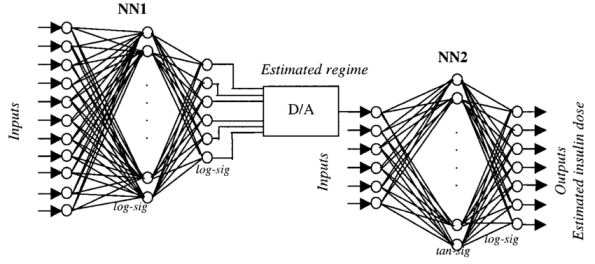Archive
How to duplicate a #partition in Windows using Disk Managment

If you want to duplicate a partition, to create an exact copy of it, then there are probably plenty of tools to do this. However, you can also do it with Disk Management – Which is available under the Computer Management tool in Windows.
First thing, is to click on the partition you want to copy, and select “Add mirror”, then select the empty partition you want to copy the data on to.
This process will take several hours, and will only show progress after 30 minutes or so – Depending on the speed of your system.
Once complete, right click on the partition, and select “Break Mirrored Volume”, you will now have two identical drives.

Automatically translate #Udemy captions using #Microsoft #Azure #Cognitive services.

Udemy has a great system for captioning videos, but perhaps you want to appeal to an international audience, and include captions in multiple languages. The best solution, of course it is to have them professionally translated, but if you want a cheap solution (and poor-quality), then you can run them through an automated translator like Azure cognitive services.
The code here is in C#, and is available on Github here; https://github.com/infiniteloopltd/vtt-translate
You download the VTT file (which is a bit like an SRT), and run it through this code;
private static string FromString(string english, string to)
{
const string host = “https://api.cognitive.microsofttranslator.com”;
var route = “/translate?api-version=3.0&from=en&to=” + to;
var subscriptionKey = ConfigurationManager.AppSettings[“subscription”];
var body = new object[] { new { Text = english } };
var requestBody = JsonConvert.SerializeObject(body);
using (var client = new HttpClient())
using (var request = new HttpRequestMessage())
{
request.Method = HttpMethod.Post;
request.RequestUri = new Uri(host + route);
request.Content = new StringContent(requestBody, Encoding.UTF8, “application/json”);
request.Headers.Add(“Ocp-Apim-Subscription-Key”, subscriptionKey);
var response = client.SendAsync(request).Result;
var jsonResponse = response.Content.ReadAsStringAsync().Result;
var jResponse = JArray.Parse(jsonResponse);
foreach (var translation in jResponse[0][“translations”])
{
var strText = translation[“text”].ToString();
return strText;
}
}
return null;
}
Obviously, you’ll need your own subscription key from azure, but the free tier covers 2M chars.
Techies can help reduce the spread of the #CoronaVirus too.

Improving ML.NET accuracy by connecting 2 neural networks #AI #ML

In this case, I am using the Issue Classification scenario in ML.NET, where I initially trained a network to predict an output on 24 inputs. The result was a very poor 10%, but I had an idea, to create a second training set, based on the inital inputs, plus the outputs (The SCORE array) of the network (31 elements).
By creating a new table, with the initial 24 inputs, the training output, and the scrore array, i.e. another 31 floats, I then created a table that was 56 columns wide, and I used that again to train on ML.NET.
Using this second-level neural network, I effectively created a neural network with twice the number of layers, and the accuracy went from 10% to 30%.
I am hoping to repeat this process another number of times to gradually increase the accuracy up to a usable level of 90%.
No code examples yet; but if the repeated process actually increases this right up to 90%+, then I’ll share!
Dealing with #Overfitting in ML.NET (#AI / #ML)

One of the issues with ML.NET, is that it will tend to be over-eager to provide a prediction, even when there is not enough information to go on, in order to make any sort of accurate prediction. This is where you should also look at the Score Property, and take the Max Value of this array in order to determine the level of confidence.
If you then plot confidence against correct predictions and incorrect predictions, and hopefully you should see that incorrect predictions should lie primarily on the lower end of the confidence scale, and correct predictions should lie on the higher end of the confidence scale.
Ideally, you should see a clearer delimination between correct and incorrect, to allow you say that if confidence is less than .3 (or whatever), then the prediction is unknown, not the wild guess that ML.NET has suggested.
To generate this graph, here is the SQL I used;
create table PercentileGraph
(
id int identity(0,1),
[Start] as cast(id as float)/100,
[End] as cast(id as float)/100 + 0.01,
Correct int,
Incorrect int,
)while 1=1
begin
insert into PercentileGraph default values
end— Run for a second, then stop
delete from PercentileGraph where id>100
select * from PercentileGraph
update PercentileGraph set correct =
(
select count(*) from Evaluation where
Model=Predicted
and ModelConfidence>=PercentileGraph.[start]
and ModelConfidence<=PercentileGraph.[end]
)update PercentileGraph set incorrect =
(
select count(*) from Evaluation where
Model<>Predicted
and ModelConfidence>=PercentileGraph.[start]
and ModelConfidence<=PercentileGraph.[end]
)select * from PercentileGraph
#DES Encryption using #BouncyCastle in C#

DES or the Data Encryption Standard, is a classic symetric encryption algorithm that is largely been superceeded by AES and 3DES nowadays, but you may have a legacy format that still uses DES, so you will need to interoperate with it.
This code example uses the BouncyCastle library in C# to perform DES encryption and decryption with an 8 byte (64 bit) key, and is available here; https://github.com/infiniteloopltd/DES
It is a 8 byte block cypher, like Blowfish, so your ciphertext will be bloated by a maximum of 8 bytes – So it’s economicical with memory on short plaintexts.
I’ve used byte arrays here as inputs and outputs for flexibility;
private static byte[] DES_Encrypt(byte[] input, byte[] key)
{
var engine = new DesEngine();
var cipher = new PaddedBufferedBlockCipher(new CbcBlockCipher(engine));
cipher.Init(true, new KeyParameter(key));
var cipherText = new byte[cipher.GetOutputSize(input.Length)];
var outputLen = cipher.ProcessBytes(input, 0, input.Length, cipherText, 0);
cipher.DoFinal(cipherText, outputLen);
return cipherText;
}
And the decyption is as follows;
private static byte[] DES_Decrypt(byte[] key, byte[] cipherText)
{
var engine = new DesEngine();
BufferedBlockCipher cipher = new PaddedBufferedBlockCipher(new CbcBlockCipher(engine));
cipher.Init(false, new KeyParameter(key));
var plainText = new byte[cipher.GetOutputSize(cipherText.Length)];
var outputLen = cipher.ProcessBytes(cipherText, 0, cipherText.Length, plainText, 0);
cipher.DoFinal(plainText, outputLen);
return plainText;
}